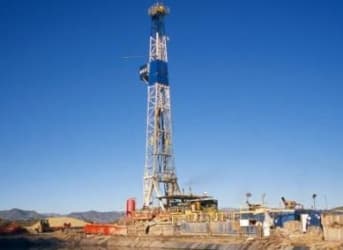Water used for fracking has always been a headache for the oil industry but now, thanks to new technology being developed in the United States, produced water - H2O used in the process of oil and gas extraction - could soon be recovered and used to power the operation or be put back into the grid, saving operators a bundle.
Critics of fracking have long pointed to the prodigious use of water in the fracking process as one of the reasons to be against the controversial procedure, which props open layers of shale rock in order to let the oil or gas hydrocarbons flow into the well bore.
When a well is fracked, water is pumped down the well at high pressure to fracture the formations where oil and gas are found. The water that returns to the surface contains chemicals that were used in the fracking process, and other materials, that must be cleaned up and disposed of properly.
It is estimated that drillers in the United States process 25 billion gallons of water annually, with a typical frack well taking 5 million gallons. Experts say that amount of water-flow is enough to generate as much electricity as three coal-fired power plants running around the clock. Related: Oil Price Plunge Raises Fears for Indebted Shale Companies
Fortunately, research is already underway to help determine whether processed water can be put to good use rather than wasted.
A $3.5 million pilot project starting this month, led by Continental Resources and the University of North Dakota, will look at the feasibility of applying geothermal technology to the thousands of frack wells that have been drilled recently in the U.S.
The researchers will hook up two geothermal generators to pipes carrying hot wastewater from up to a mile and a half underground. The steaming water will then be pumped through generators housed in 40-foot containers to produce electricity.
Will Gosnold, professor of geophysics at University of North Dakota, says the water they are using comes out of the ground at 102 degrees Celsius - not super-hot by geothermal standards - and is cooled to 98 degrees. Related: Why We Should Get Used To Low Oil Prices
“This is what we would call a low-temperature geothermal demonstration project,” Gosnold said in a recent interview on BNN. “The idea is to see if this actually can be done and done economically.” He said the economics look promising considering that the researchers are tapping into an existing water supply and simply converting the heat to power.
The process would generate about 0.25MW of electricity – enough to power 300 homes. Gosnold notes the equipment would only cost around $350,000, allowing the researchers to create power at around $3,000 a kilowatt. “That's a good price,” he told BNN's Andrew Bell.
The technology would appear to be a no-brainer for the fracking industry, which spends heavily on electricity generation at frack sites. North Dakota, for example, is estimated to need 3.2GW of additional power over the next 30 years solely for the purpose of oil drilling. In the absence of alternatives, operators will have no choice but to continue using propane or diesel to power large portable power units installed at the sites, which are usually remote and lack access to the electricity grid. Related: Midweek Sector Update: What The Iran Deal Actually Means For Oil Markets
If the geothermal experiment is successful, it means that another supply of portable power could be taken from site to site. If a number of wells were joined together in a circuit and their wastewater used for geothermal power, several megawatts could be generated, says Gosnold.
That would be clean power without having to resort to fossil fuels, which makes the technology all the more appealing to oil companies whose operations, particularly fracking, are under increasing environmental scrutiny.
ADVERTISEMENT
Thus far, such companies have only shown interest in using wastewater to “waterflood” a well in order to coax more oil from it – but if Gosnold's experiment proves successful, more may be lining up. This is especially true in today's low oil price environment, where operators are looking for every opportunity to cut costs and add revenue. According to estimates from the U.S. Energy Department, a 250-kilowatt generator could contribute an additional $100,000 a year per well.
By Andrew Topf of Oilprice.com
More Top Reads From Oilprice.com:
- The Multi-Trillion Dollar Oil Market Swindle
- Historic Deal With Iran Opens Up Oil Industry
- OPEC, Get Ready For The Second U.S. Oil Boom


















